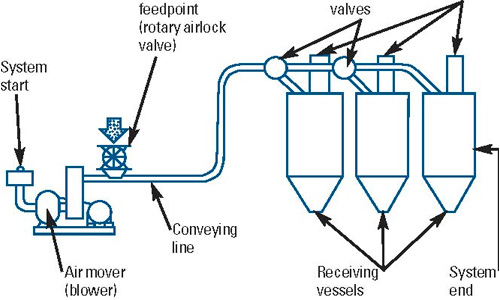Q:How Does a Pneumatic Conveying System Work?
A: Doing work requires energy. To turn a bolt, for instance, you need to provide energy in the form of torque. Such mechanical torque is usually expressed in foot-pounds, and both elements — feet and pounds — are needed to do the work. Energy is also required to move material through a pneumatic conveying system, but in this case the energy is supplied by pressure differential (in pounds per square inch) and airflow (in cubic feet per minute). In a pneumatic conveying system, the air pressure in the conveying line is changed by the system’s air mover, which generates pressure or vacuum. Where the air mover is located in the system determines whether it generates one or the other: When located at the system’s start, the air mover pushes air through the system and the system operates under pressure. When located at the system’s end, the air mover pulls air through the system and the system runs under vacuum. By controlling the pressure or vacuum and airflow inside the system, the system can successfully transfer materials.